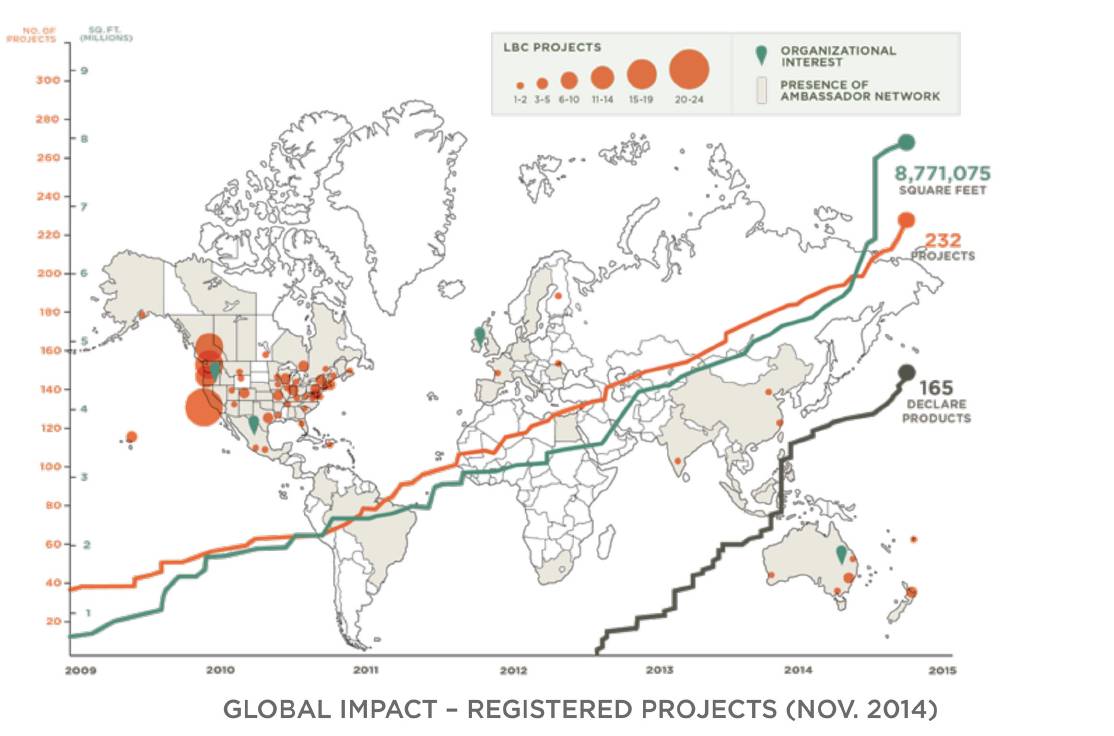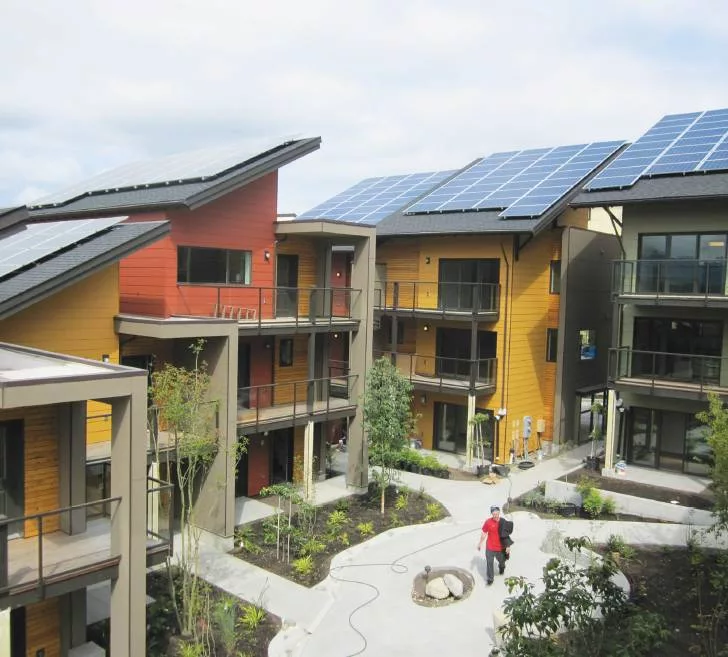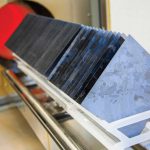
Projects can achieve three different certifications including full Living Building Certification, Petal Recognition, or Net Zero Energy Building Certification. While Living Building Certification is the ultimate goal for most projects, there are seven different “Petals,” or performance categories, including place, water, energy, health and happiness, equity, beauty, and materials, in which projects can certify in the pursuit of full Living Building Certification. In order to achieve Petal Certification, projects must certify in three or more Petals and one of the Petals must be either water, energy, or materials. Full Living Building Certification includes projects that have achieved all seven Petals in addition to meeting 20 different imperatives established by the International Living Building Institute.
In addition to being a certification process, the Living Building Challenge can be seen as a philosophy – a profoundly unique approach to looking at the environment. Rather than trying to be less bad, the Living Building Challenge steps back to ask the question, what does “good” look like? We had a chance to discuss this innovative approach to promoting a more sustainable built environment with Living Building Challenge Executive Director Amanda Sturgeon.

Leadership in Energy and Environmental Design, or LEED, is probably the most recognized certification in the built environment. How does the Living Building Challenge differ from LEED and build upon it?
Amanda Sturgeon: The Living Building Challenge goes beyond LEED to create buildings and communities that are truly restorative. It challenges buildings and communities to become net positive in their energy and water use and to remove the worst-in-class toxins from all building materials. The Challenge is intended to pull the market forward and to provide solutions for a living future that we cannot yet fully envision.
How many projects have been certified so far?
AS: To date, we have over 240 projects registered and 21 certified (with many more about to be announced at our upcoming Living Future Conference in April). Some of these buildings have completed all seven Petals and all 20 imperatives and are Living Certified, while others have achieved three or more Petals and have Petal Certification or have achieved Net Zero Energy Building Certification.
We are seeing rapid expansion of the Living Building Challenge around the world, which is now in 18 countries. We have a special concentration here in the US and Canada, of course, as well as in Australia and the UK, where we’ve got some incredible projects underway.
What is the largest systemic barrier to living buildings scaling and becoming the mainstream standard in the future?
AS: The largest barriers are regulatory, particularly around water. Everywhere you find a Living Building, you’ll find a new precedent being set for building codes. For example, the Bullitt Center in Seattle is often called the “greenest office building in the world.” Many water regulations had to be changed due to the project, such as allowing the release of greywater into a public right-of-way in an urban area and harvesting rainwater for potable uses.
What has been the most popular Petal and which one seems to be the most challenging?
AS: Our most popular Petal is the Energy Petal, which requires the building to produce 105 percent of its energy use from renewable, on-site sources over the course of a year. What I love about this Petal is that it is so clear and simple (you either meet it or you don’t), but the project teams are left to determine the best way to get there.
Most of our project teams will probably tell you that our Materials Petal is the most challenging, given that we require that a certain list of toxic materials (called our “Red List”) be avoided. Initially, finding products that avoid these Red List materials was difficult, so we developed our own transparency label for manufacturers called “Declare,” which is a self-declaration label identifying a product’s ingredients.

Does the LBC offer any guidance for current homeowners on ways to renovate their homes in a sustainable manner? Can rehabilitating an older home bring it up to full certification or Petal Recognition under the LBC guidelines?
AS: Yes! We’ve had several homes go through the process, such as zHome in Washington. And yes, you can renovate an existing building or home and become certified. In fact, we recently released a framework for affordable housing projects that creates clear pathways for developers of these projects to achieve Living Building Challenge certification.
The LBC has seven focus areas: place, water, energy, health and happiness, equity, beauty, and materials. Can you provide us with a few examples of how you quantify and judge areas such as beauty or health and happiness?
AS: The intent of the Beauty Petal is to recognize the need for beauty in order for us to have a living future. The intent of the Petal is not to determine whether certain aesthetics are preferable to another but whether the human soul and spirit is enriched through the project and whether the occupants of the building are delighted to be in the project. The Beauty Petal is determined in part by an occupant survey.
When you reflect on where the LBC began and how far it has come, what is an example of the change you had hoped to create?
AS: The program has achieved more than we could have ever hoped. It has been rapidly adopted in a wide range of locations across the world and experienced a 40 percent increase in registered projects during 2014. Having the first hospital register and the first projects in China register during 2014 were two highlights for the Challenge.
LIVING BUILDING CHALLENGE 3.0

Seven Petals to Certification





